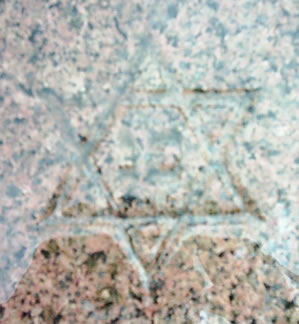
|
The Project to Restore the
Student Essay: |
|
The first Jews came to Przerosl at the beginning of the 17th century (1710). Between 1709 and 1710 a lot of them reached the town, and in 1736 the main Bishop of Vilnius, Zienkowicz, allowed them to build a synagogue and put the cemetery on Zusenkowska Street. The great development of Przerosl led Jews settle there at this time. In 1799 there were 205 Jewish dwellers in the town, but by 1819 their population had become larger and consisted of 598 people (301 men and 297 women). The most important question we have to ask in this essay is: How did the Jews in Przerosl live? In fact it was really difficult to establish, as many people who remembered them very well had died or left the town just after the war. However, we decided to look for those who are alive and talk to them about the past. Sometimes it was not easy, because the old people did not want to talk about those times, or they just remembered very little. We also found a local newspaper from 1992 with some articles about Jews. In one of them there was a letter written by Motko Abramski. He wrote, "Our relations with Polish people were generally good, but just before the war they simply got worse and worse. Maybe it was the fault of German occupation. The Poles were forbidden to buy from Jews. I and my brother, Josef, were last in Przerosl in 1988. Everything had changed, and we were sorry not to have met many familiar people. The cemetery is in very bad condition..." Motko's father, Nysko Abramski, was the local grocery shop owner. He also bought cereals from the local farmers. People who remember those times showed us the place where it was located (Suwalska Street). Now it is Mr. Rant's house. Our interviewees say that some young boys used to steal cereals from the local owners to sell them to Nysko Abramski, and then the army in Suwalki bought them. There was also Ruwko Abramski, Nysko's cousin, who had a shop together with Zelman Bramson and Jan Mariampolski, who were also Jews. Ruwko Abramski lived on the Market Place (now it is Mr. Kwiatkowski's shop). As we found out, Ruwko had two sons who escaped to Palestine just before the war. We asked our interviewees about some Jewish ceremonies they remember from the past. One of the oldest inhabitants of the town described the funeral of Abramski's mother-in-law. The celebration started in the house, where a dead woman was laid on the floor which was covered with straw, and her face was covered with a piece of linen. There were two lit candles behind her head. It lasted two days. After that she was wrapped around in white sheets and taken to the cemetery. The grave was rather shallow, and the family put a fist of Palestinian soil on her body. The other celebration mentioned by the people who were talking to us was something like "The Tents Holiday." Young Jewish people built tents or wooden shelters as a symbol of leaving Egypt. Synagogues were very important to contemporary Jews. It is said that there were two synagogues in Przerosl. One of them was just opposite our school, but it was damaged by German soldiers, and the other one was somewhere on Dworna Street. The Jews who lived in Przerosl were said to be honest and hard-working people. Trade and industry were the main fields they dealt with, so the local people really needed them. In fact, they couldn't exist without each other. In those times there was only one Polish shop at the Market Place, which proves that the Jewish shops were really good. The Market Place was the center of Jewish people's social life. Thanks to the dwellers' recollections we managed to get some information related to the location of Jewish houses and shops in Przerosl. Estera Dworska had a tea shop and a small bakery at the Market Place (today it is a kindergarten). Nearby, around the corner (nowadays it is the local Center of Culture), there was the house of Janiel Szapiro (Shapiro). He sold drugs and haberdashery. He cured all the inhabitants, and he had various drugs to heal many illnesses Izrael Motulski (known as "Babcuk") lived near Jankiel Szapiro. He was the richest Jew in Przerosl. The buildings along Koscielna Street belonged to him (he kept dry goods there). Izrael Motulski also had the ironware shop, and he sold food. Our interviewees remember that they could buy geese, sheep, herrings, and many other things from him. Izrael was known for gathering old clothes, carpets, and pots from people, and then he sold or exchanged them. He had one son, Abram. Chaim Buslawski lived on the west side of the Market Place behind the Motulski family. He was a soldier in the Polish Army in Suwalki. Chaim was probably the most handsome man in Przerosl, so Polish girls fell in love with him as well as Jewish ones. The local administrative department was the property of Izrael Peltyn. In the past it was a bar, the only one in Przerosl. Peltyn was lame in both legs, and always supported himself with a walking stick. He had lots of children. Our interlocutors remember such names as: Szlomo Manuszer (a grocery store owner)
Where are the descendants of those people?
There are so many questions that arise. The answers are hidden under
|
| Next: A Visit |
[ Home Page
| Donations
| Matzevot (Headstones)
| Videos
| Donors ]
[ Student Essays: The Jews of Przerosl
| The Cemetery
| Links
| Contact Us ]
